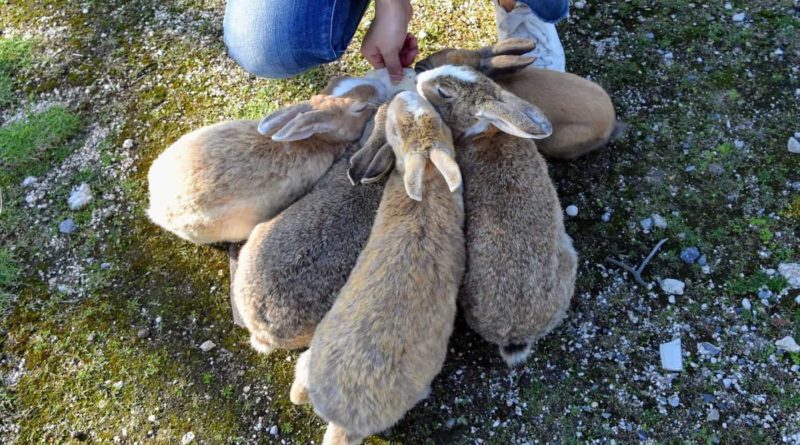Where did the bunnies on Rabbit Island come from?
Every day hundreds of people visit the tiny island of Okunoshima in Japan, once the site of poison gas production and now known around the world as Rabbit Island, to feed, pet and sometimes get mobbed by some of the 700 or so bunnies for which it is home. But just where did all these rabbits come from?
They are certainly not native to the island, but trying to get to the bottom of how Okunoshima became a bunny paradise is no easy task. So, let’s take a look at the most common explanations and see if they hold up to scrutiny.
1. Bunnies as guinea pigs
Today’s rabbits are the descendants of those used as test subjects in the poison gas factory that were freed by allied soldiers when they took over the island at the end of World War II. This romantic notion is unfortunately not true as all the test animals on site were euthanized by the allied forces.
2. Bunnies as canaries
It has been suggested that rabbits were introduced after the war to act as an early warning if any hidden poison gas deposits were released, like canaries in a coal mine. The thinking goes that, as the poison gas produced on the island is heavier than air, rabbits living close to the ground succumb more quickly than humans. In a 1997 interview, Hatsuichi Murakami former curator of the island’s small Poison Gas Museum, who worked at the poison gas factory as a teenager, accepts that might make sense, but there seems to be no evidence to back the theory up.
3. Bunnies as gifts
The most commonly cited explanation is that a group of elementary school students released 8 rabbits on the island back in 1971. Rabbits were popular elementary school pets and, rabbits being rabbits, schools would take care to keep male and females apart. One local story goes that a prankster at this particular school took down the fence that separated them and let nature take its course; the result being that the school had more bunnies than it could handle.
4. Bunnies as mascots
The manager in charge of the Kyukamura National Park Resort Hotel when it first opened, Hirofumi Nishiyoshi reveals in his retelling of the history of the resort that the introduction of deer to the island (Mr Murakami also mentions that monkeys were also considered in the interview mentioned above) was discussed as a way of attracting more visitors. Due to the problems envisioned with feeding such animals on the rather dry island, it was decided to make the lower-maintenance rabbit the symbol of Okunoshima. Nishiyoshi says [ja] that he brought 5 rabbits to the island. In a 1996 article [ja] for the Yomiuri Shimbun, Seiko Suga writes that it was after these first few rabbits were introduced that a local elementary school added to the population which then began to grow and grow.
It is surprisingly difficult to separate fact from myth when it comes to the truth behind the origin of Rabbit Island’s most famous residents, but the last explanation seems to be the most likely. There may be some debate about where the first rabbits came from, but what is certain is that, with a current population of between 700 and 900, the bunnies of Okunoshima have put the once top secret island on the world map.
Sources:
大久野島国民休暇回顧(誕生の頃から)(Looking back at the birth of Okonushima Kyukamura National Park Resort Hotel) by Hirofumi Nishiyoshi reproduced here and here [ja].
Interview with former Poison Gas Museum director Hatsuichi Murakami, NPO Citizen Science Initiative Japan (CSIJ). Reproduced here [ja].
The easiest way to get to “Rabbit Island” (Okunoshima) is by ferry from Tadanoumi Port, a vert short walk from Tadanoumi JR Station and bus stop. This ferry line connects with Sakari Port on Omishima making Rabbit Island a good side trip option for cyclists doing the Shimanami Kaido. Get the latest information at rabbit-island.info.



